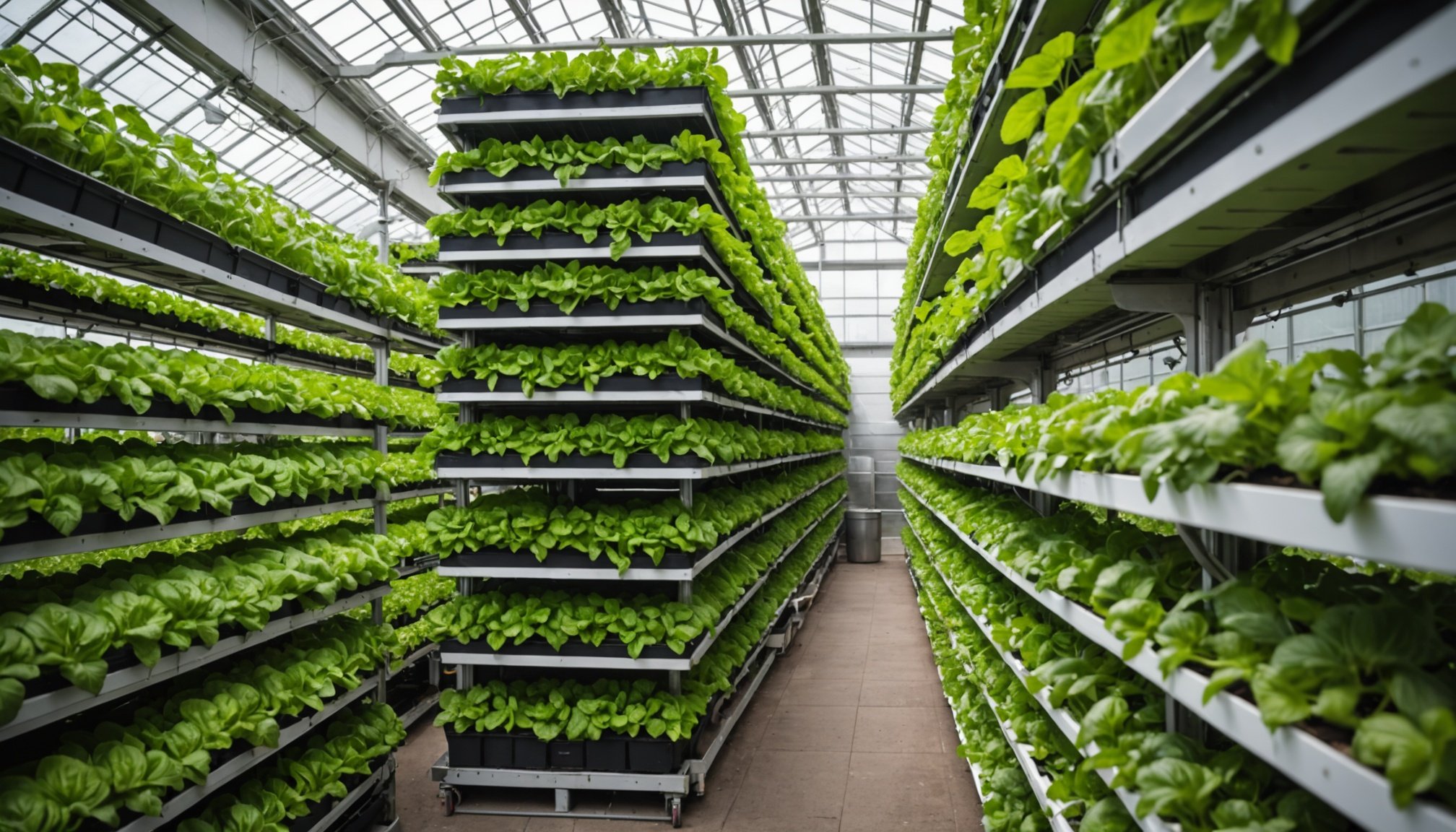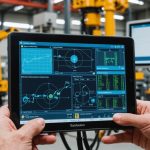Transforming Cities with Vertical Farming: An Innovative Approach to Sustainable Food Production and Reducing Carbon Emissions to Vertical Farming
In the face of escalating global population and the pressing issues of climate change, traditional farming methods are being challenged to meet the increasing demand for food while minimizing environmental impact. This is where vertical farming steps in, offering a revolutionary and sustainable solution to urban food production. Vertical farming, also known as indoor vertical agriculture, involves growing crops in vertically stacked layers within controlled indoor environments. This method is not just a novelty; it is a game-changer in the way we produce, distribute, and consume food.
How Vertical Farming Works
Vertical farming leverages advanced technologies such as hydroponics, aeroponics, and LED lighting to create optimal growing conditions for plants. Here’s a breakdown of the key components:
Also to read : Revitalize your well-being and the earth: discover the advantages of adopting a zero-waste lifestyle
Hydroponics
In hydroponic systems, plant roots are submerged in a nutrient-rich water solution, eliminating the need for soil. This method ensures precise control over the nutrients plants receive, enhancing growth and reducing water usage significantly[3][4].
Aeroponics
Aeroponic systems suspend plant roots in the air, where they are periodically misted with a nutrient solution. This approach minimizes water use and maximizes space efficiency[3][4].
In the same genre : Revolutionizing art engagement: creative therapeutic programs in museums for visitors battling mental health issues
Aquaponics
Aquaponics combines hydroponics with aquaculture, using fish waste as a nutrient source for plants. This closed-loop system is highly efficient and sustainable[4].
Benefits of Vertical Farming in Urban Areas
Vertical farming is particularly beneficial in urban settings due to several key advantages:
Year-Round Production of Leafy Greens
Vertical farms can produce leafy greens and other crops year-round, regardless of external weather conditions. This is achieved through controlled environments that optimize light, temperature, and nutrient delivery[1][3].
Urban Food Production
With over 56% of the global population living in urban areas, vertical farming provides a transformative approach to urban food production. It enables the cultivation of fresh produce in densely populated areas, reducing the need for arable land and minimizing transportation distances[1].
Water-Efficient Farming
Vertical farming uses up to 90% less water than traditional farming methods. By employing hydroponics and aeroponics, these farms minimize evaporation and runoff, making them ideal for regions facing water scarcity[1][5].
Energy-Efficient Food Production
Vertical farms utilize advanced technologies like LED lighting and climate control systems to reduce energy consumption. Many also incorporate renewable energy sources, such as solar panels, further enhancing their sustainability[1].
Reducing Carbon Emissions and Food Miles
One of the most significant benefits of vertical farming is its impact on reducing carbon emissions and food miles.
Shortening Food Miles
By growing crops closer to consumers, vertical farms significantly reduce transportation distances. This not only decreases the carbon footprint associated with food distribution but also ensures that consumers receive fresher, more nutritious products[1].
Improving Freshness and Reducing Emissions
The ability to harvest crops at peak ripeness in vertical farms ensures higher quality and nutritional value. Additionally, the reduced reliance on long supply chains and traditional farming methods contributes to sustainability efforts by lowering greenhouse gas emissions[1].
The Role of AI and Data in Vertical Farming
The integration of artificial intelligence (AI) and data analytics is revolutionizing vertical farming.
Data Collection and Analysis
AI-driven technologies in vertical farms generate vast amounts of data that help refine the entire production process. Sensors and automated systems monitor plant growth in real-time, leading to more efficient resource use and continuous optimization of growing conditions[2].
Advantages of AI in Vertical Farming
AI enables seamless operation of vertical farms, improving crop yield and reducing energy consumption. The data collected from each growth cycle provides new insights into food production, making the process more efficient, sustainable, and scalable[2].
Urban Planning and Vertical Farming
Vertical farming is not just about growing food; it is also about integrating sustainable practices into urban planning.
Integrating Vertical Farms into Urban Infrastructure
Cities like Singapore and European metropolises are leading the way in incorporating vertical farms into their urban planning. These farms are often housed in skyscrapers, warehouses, or shipping containers, maximizing land use in urban areas[4][5].
Collaborative Models for Urban Agriculture
Partnerships between vertical farming companies, local governments, and educational institutions are fostering innovation and driving growth in urban agriculture. These collaborative models ensure that vertical farming is not just a niche practice but a mainstream solution for sustainable food production[5].
Practical Insights and Actionable Advice
For those interested in starting or supporting a vertical farm, here are some practical insights and actionable advice:
Starting a Vertical Farming Business
Vertical farming is an excellent option for those with limited land access, capital, or farming experience. It allows for year-round production, full transparency in food safety, and the ability to grow food in any location, regardless of soil quality[3].
Key Considerations
- Choose the Right Method: Decide between hydroponics, aeroponics, or aquaponics based on your resources and goals.
- Invest in Advanced Technologies: Utilize LED lighting, climate control systems, and AI-driven technologies to optimize growing conditions.
- Ensure Water Efficiency: Implement closed-loop systems to recycle water and minimize waste.
- Integrate Renewable Energy: Use solar panels or other renewable energy sources to power your farm.
Table: Comparing Traditional Farming with Vertical Farming
| Aspect | Traditional Farming | Vertical Farming |
|---|---|---|
| Land Use | Requires large areas of arable land | Maximizes space by growing crops in vertically stacked layers |
| Water Use | High water consumption, significant evaporation and runoff | Up to 90% less water use, minimal evaporation and runoff |
| Energy Consumption | High energy use for irrigation, machinery, and transportation | Energy-efficient with LED lighting and climate control systems |
| Crop Yield | Seasonal and weather-dependent crop yields | Year-round production with optimized growing conditions |
| Pesticide Use | Often requires pesticides to control pests | Minimal to no pesticide use due to controlled indoor environments |
| Food Miles | Long transportation distances from farm to table | Shortened transportation distances, reducing carbon emissions |
| Food Quality | Variable quality due to external factors | Consistent high quality due to controlled growing conditions |
| Environmental Impact | Significant carbon footprint, soil degradation, and water pollution | Reduced carbon footprint, minimal environmental impact |
Quotes from Industry Experts
- “Vertical farming is not just a new method for indoor crop cultivation; it opens up unprecedented opportunities for data collection and analysis, making food production more efficient, sustainable, and scalable.” – vGreens[2]
- “By 2050, the global population is set to surpass 9.7 billion people, and vertical farming can counteract the problem of declining arable land by growing plants indoors in areas where there is no longer any arable land.” – Freight Farms[3]
- “The incorporation of hydroponics, aeroponics, and artificial lighting systems in vertical farming is crucial for enabling cultivation throughout the year, regardless of external weather conditions.” – S&S Insider Report[5]
Vertical farming is more than just an innovative farming method; it is a transformative approach to sustainable food production and urban planning. By leveraging advanced technologies, reducing water and energy use, and minimizing carbon emissions, vertical farms are setting a new standard for agriculture in the 21st century. As cities continue to grow and the world grapples with climate change, vertical farming stands as a beacon of hope for a more sustainable and food-secure future.
In conclusion, if you are considering how to make a positive impact on the environment while ensuring food security, vertical farming is definitely worth exploring. Whether you are an urban planner, a farmer, or simply a consumer interested in sustainable practices, the benefits of vertical farming are undeniable. So, let’s embrace this innovative approach and transform our cities into hubs of sustainable food production, one vertical farm at a time.











